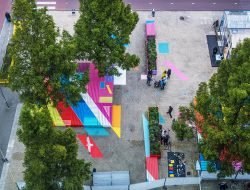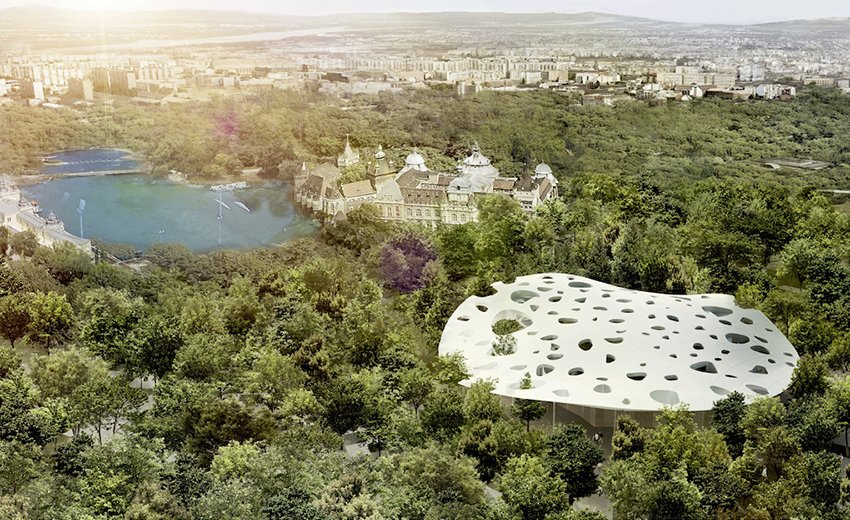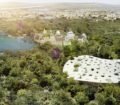The Hungarian Music House will make it possible to exhibit, listen to and learn music at the same time. A world premiere.
Designed by the Japanese architect Sou Fujimoto, this spectacular building located on the site of the former Hungexpo exhibition centre, is nearing completion. It is part of the Liget Budapest project, the largest urban cultural development programme in Europe.
Liget Budapest plans to rehabilitate the large Varosliget park, a huge public park created 200 years ago, which includes the Museum of Fine Arts, the Transport Museum, the Agricultural Museum and the Műcsarnok Art Museum. It will also host the new national gallery and the new ethnography museum. In short, a concentrate of high-level culture in one and the same place.
A glass roof that evokes music
“It is incredibly inspiring to work in one of the world’s first public parks, and the task of designing the building was particularly exciting because we not only created a building but also brought the park into the building”, explains architect Sou Fujimoto. “The Liget Budapest project is a truly emblematic development project, which could serve as an example for future urban developers since it has succeeded in creating exceptional harmony between the green environment and the built environment.“
The Hungarian Music House will be sensational : it is capped with an organically shaped structure, without the slightest right angle, perforated with various skylights. An impressive cap that seems to float in its bucolic setting. The glass walls also help to immerse the building in nature, while the shape of the glass roof is inspired by the vibration of sound: the wave.
The highlight of the construction: a sound dome – a hemispherical dome in which various “sound spaces” will be created using audio and projection technologies. In the building, we will find the archives of Hungarian pop music , halls dedicated to musical awakening and learning, two concert halls (one indoor, one outdoor) as well as 2000m2 of exhibition space.
Its opening to the public is scheduled for the end of 2021.
Tags: Budapest, Hungarian Music House, Liget Budapest, Sou Fujimoto, Varosliget












































